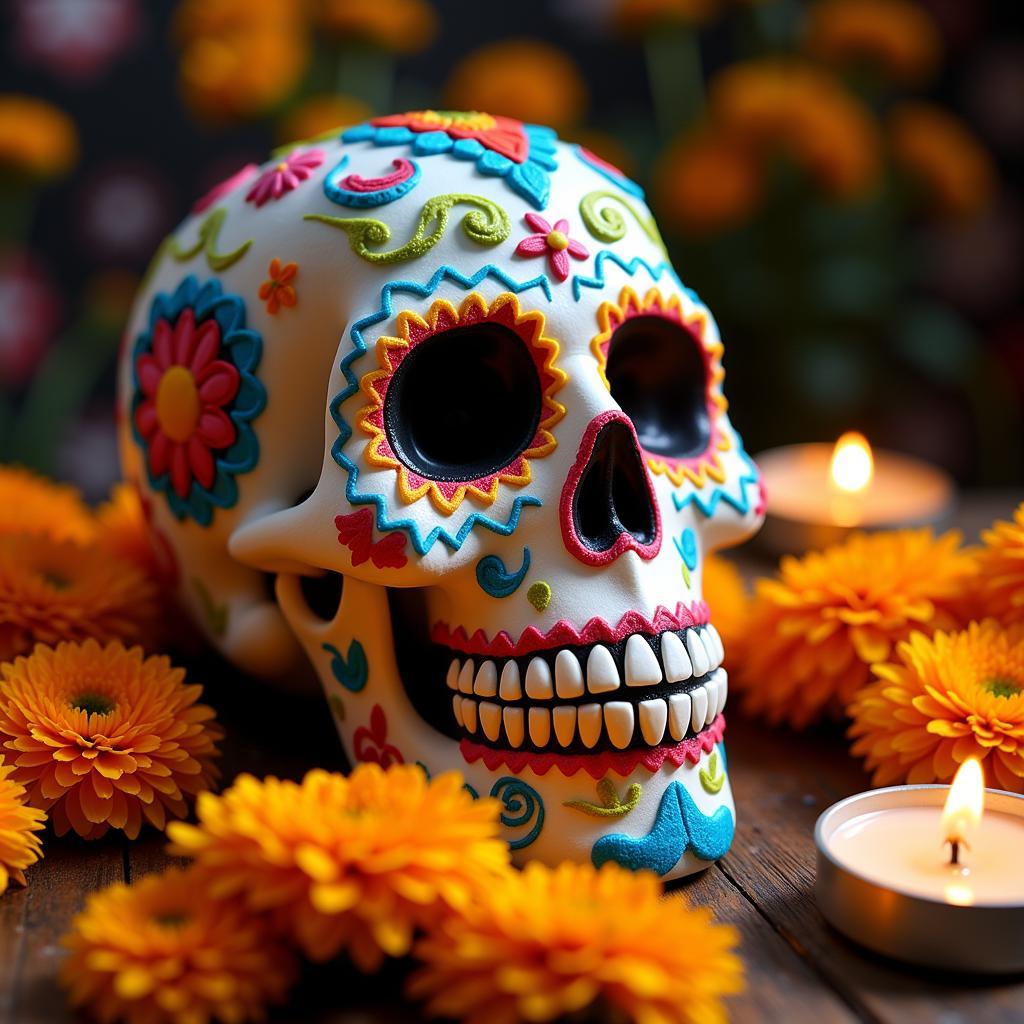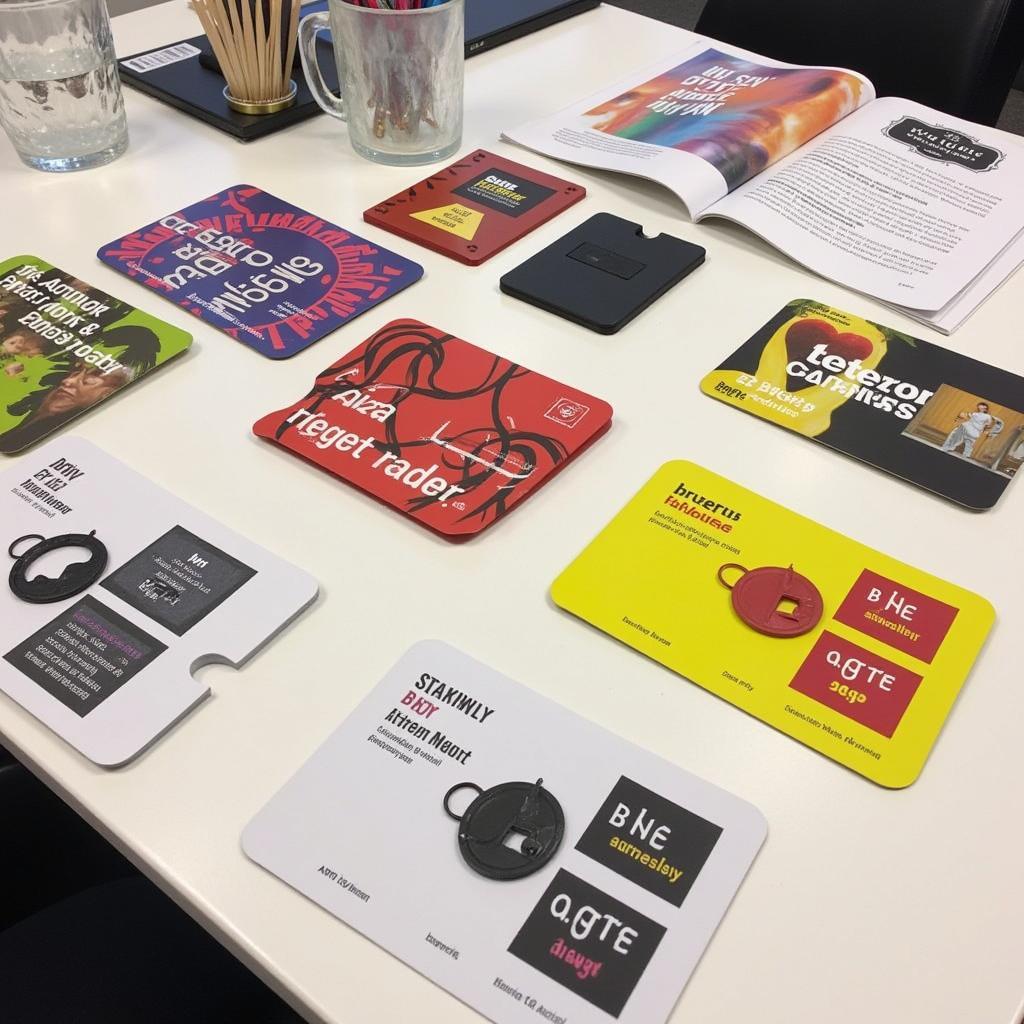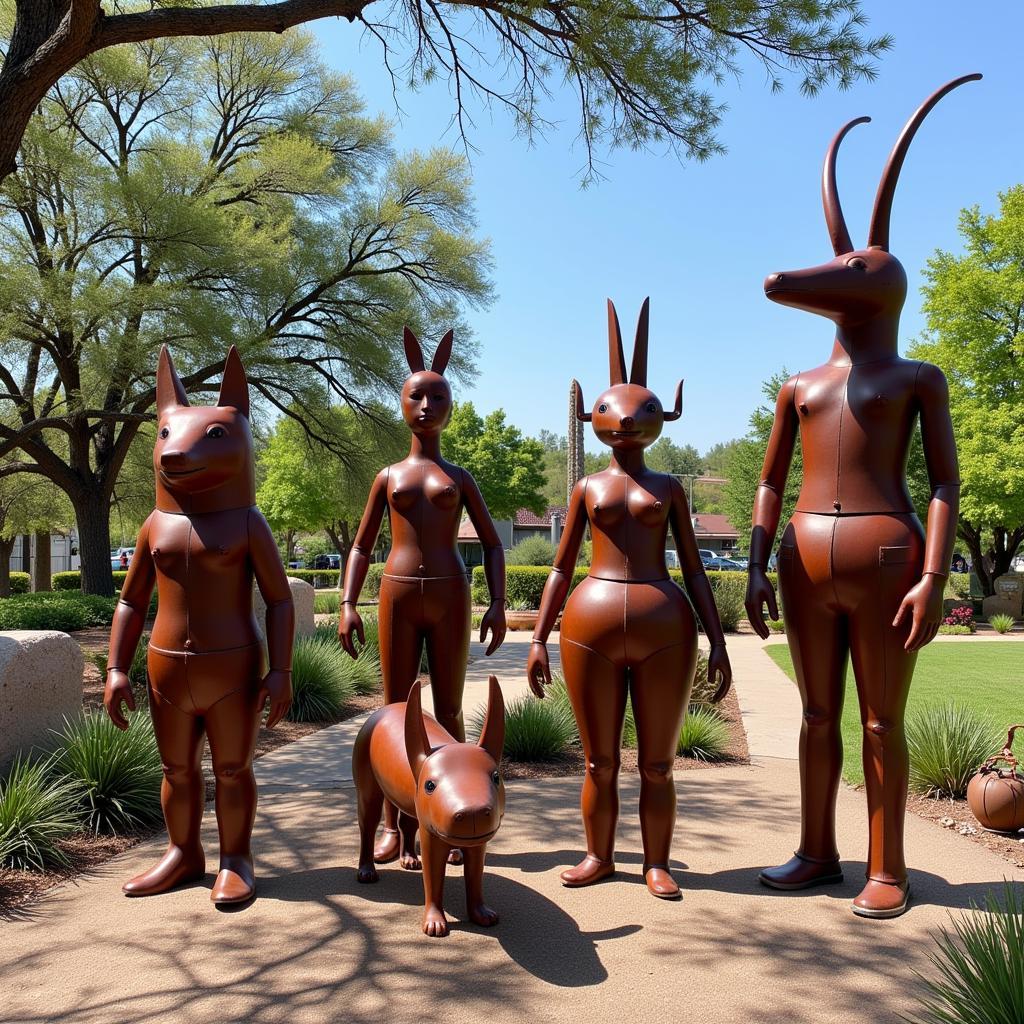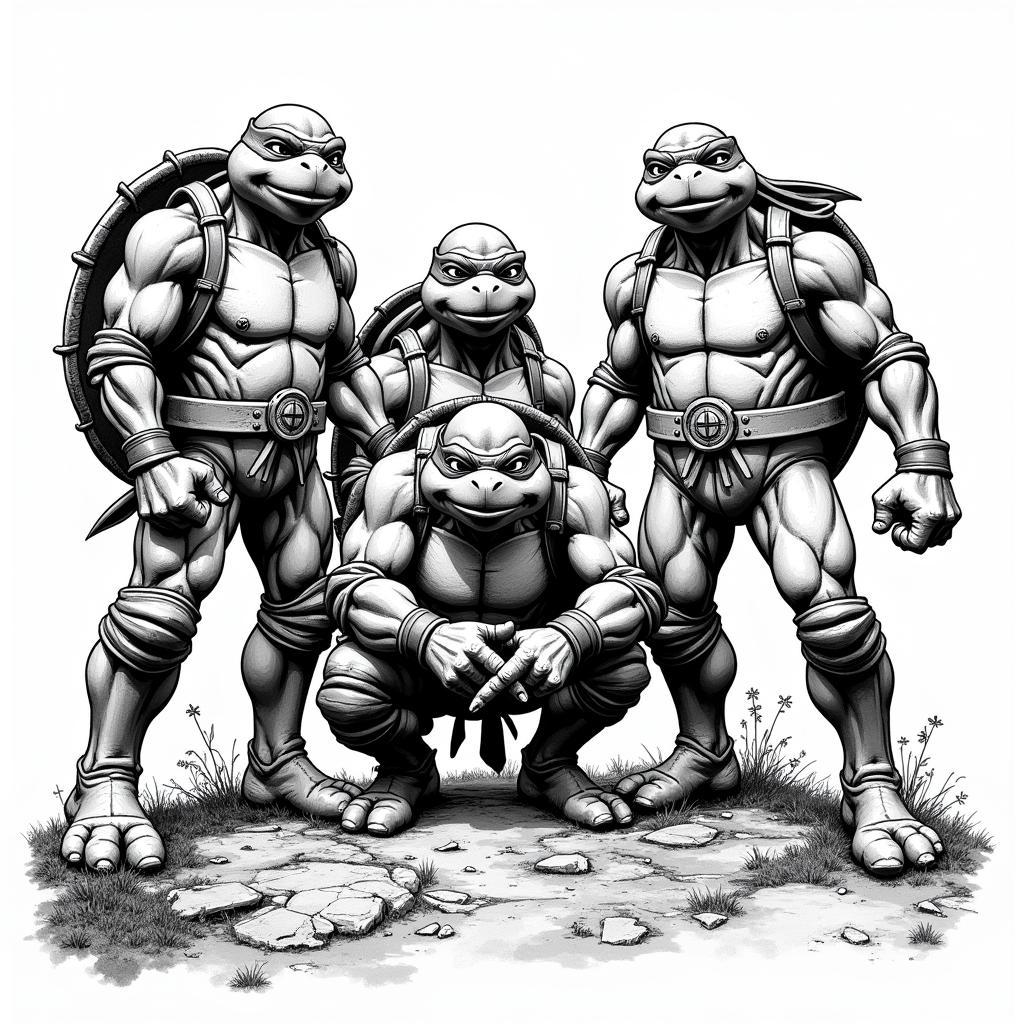Day of Dead Skeleton Art: A Vibrant Celebration of Life
Day Of Dead Skeleton Art, a captivating blend of tradition and artistry, offers a unique perspective on life and death. These vibrant depictions, far from morbid, celebrate the memory of loved ones and the continuity of life beyond the physical realm. From intricately painted skulls to elaborately costumed calacas, this art form embodies the spirit of Día de los Muertos, inviting us to reflect on our own mortality while rejoicing in the memories of those we’ve lost. Let’s delve deeper into this fascinating world.
Exploring the Symbolism of Day of Dead Skeleton Art
day of the dead skeleton art goes beyond mere decoration; it’s a powerful language of symbolism. Skeletons, often depicted in joyful poses and vibrant attire, represent the deceased, returning to celebrate with their living relatives. This playful portrayal of death underscores the Mexican belief that death is not an ending, but a transition to another stage of existence. Sugar skulls, adorned with intricate icing and vibrant colors, are a common motif, symbolizing the sweetness of life and the remembrance of loved ones.
What does Day of the Dead skeleton art represent? It represents a celebration of life, a remembrance of loved ones, and the acceptance of death as a natural part of life’s cycle.
 Day of the Dead Sugar Skull Art
Day of the Dead Sugar Skull Art
The Rich History of Dia de los Muertos Skeleton Art
The tradition of dia de los muertos skeleton art is deeply rooted in pre-Hispanic cultures, with origins dating back thousands of years. Ancient civilizations like the Aztecs and other Mesoamerican cultures viewed death as a natural part of life’s cycle. They honored their deceased ancestors with rituals and offerings, including artistic depictions of skeletons and skulls. Over time, these traditions blended with Catholic beliefs brought by Spanish colonizers, evolving into the present-day Dia de los Muertos celebration.
How did Day of the Dead skeleton art originate? It evolved from ancient Mesoamerican traditions of honoring the dead, blending with Catholic beliefs over time to become the vibrant celebration we know today.
Creating Your Own Day of Dead Skeleton Art
Whether you’re a seasoned artist or a beginner, exploring traditional day of the dead art can be a rewarding experience. There are numerous ways to express your creativity, from painting sugar skulls to crafting paper mache skeletons. Consider incorporating traditional motifs like marigolds, butterflies, and religious symbols to add depth and meaning to your artwork. Experiment with different mediums and styles to discover your own unique artistic voice within this vibrant tradition. Remember, the most important aspect is to approach this art form with respect and an understanding of its cultural significance.
What supplies are needed for Day of the Dead skeleton art? Common materials include paints, brushes, sugar skulls, paper mache, and various decorative elements like beads, feathers, and glitter.
From Traditional to Modern: The Evolution of Day of Dead Art
Art dia de los muertos continues to evolve, embracing contemporary influences while staying true to its core values. Street art, digital art, and even fashion design are now incorporating Day of the Dead imagery, pushing the boundaries of this ancient tradition and introducing it to new audiences. This evolution demonstrates the enduring power and adaptability of Day of the Dead art, ensuring its continued relevance for generations to come.
How has Day of the Dead art changed over time? While maintaining its traditional roots, Day of the Dead art has embraced contemporary influences, appearing in various modern art forms and media.
The Cultural Significance of Day of Dead Skeleton Art
Morbid art can be a fascinating exploration of darker themes, but Day of the Dead art, though centered on skeletons, is far from morbid. Instead, it’s a life-affirming celebration that emphasizes the importance of remembering and honoring those who have passed. This vibrant art form reminds us that death is a natural part of life and that our connection to loved ones transcends the physical realm. By embracing this perspective, Day of the Dead skeleton art encourages us to live life to the fullest and cherish the precious moments we have with those we care about.
Why is Day of the Dead skeleton art important? It plays a crucial role in preserving cultural heritage, honoring ancestors, and promoting a positive perspective on life and death.
In conclusion, day of dead skeleton art is a captivating expression of cultural heritage, artistic creativity, and a profound understanding of life and death. From traditional sugar skulls to contemporary murals, this art form invites us to celebrate life, remember loved ones, and embrace the beauty of the human experience.
FAQ:
- What is the significance of the sugar skull in Day of the Dead art? Sugar skulls represent the sweetness of life and the remembrance of loved ones.
- What is La Calavera Catrina? La Calavera Catrina is a female skeleton figure often depicted in elegant attire, symbolizing the democratization of death.
- How can I create my own Day of the Dead skeleton art? You can explore various mediums like painting, sculpting, and paper mache, incorporating traditional motifs and symbols.
- Is Day of the Dead art considered morbid? No, it’s a life-affirming celebration that emphasizes remembrance and connection with deceased loved ones.
- What are some common motifs in Day of the Dead art? Common motifs include marigolds, butterflies, religious symbols, and of course, skeletons.
- When is Day of the Dead celebrated? Day of the Dead is celebrated on November 1st and 2nd.
- What are some other names for Day of the Dead? It’s also known as Día de los Muertos in Spanish.
Need more information or help with Day of the Dead skeleton art? Check out these related articles: “Day of the Dead Traditions and Customs” and “Exploring the Symbolism of Day of the Dead Altars.”
For support, contact us 24/7: Phone: 02462573573, Email: [email protected] or visit Savico Megamall, 7-9 Nguyễn Văn Linh Street, Gia Thụy, Long Biên, Hanoi 10000, Vietnam.


